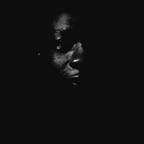Lesson I learnt from Leonardo Da-Vinci as a software developer
known for his master piece; the Mona-Lisa . Leonardo da Vinci was a genius one of the most creative minds that has ever lived in the western world. He was not just a great painter but a military engineer, anatomist, paleontologist, cartographer, musician. He has little or no formal education, as he always quote in his journal,
“my works are the issue of pure and simple experience, who is the one true mistress.”
Despite his lack of formal education, he was still able to do great things in the world of science, art and engineering. that said, here are some of the lessons I learnt after going through the biography of Leonardo Da-Vinci.
Any work of art is never finished only abandoned:
There is a popular saying in the world of software engineering that, “software is never finished only abandoned”. same is true of most creative endeavor such; a music, painting e.t.c
Leonardo Da-Vinci despite being a master at his craft, never completed most of works. even the most famous of his works the Mona-Lisa painting was never completed. He designed flying machines that never flew, armored tanked that never rolled, brilliant treatises that piled up unpublished.
“Tell me if anything was ever done,” he repeatedly scribbled in the pages of his journals. Most of his invention such as the helicopter , armored vehicles, water projects e.t.c was not materialized until modern times( he envisioned what innovators would invent centuries later.) He enjoyed the challenge of conception more than the chore of completion.
Just as mark zuckerberg once said, “Ideas don’t come fully formed they only begin to come as you work on them” . have the courage to start a project even if you’re unable to complete it, you will learn something new along the line.
Be curious, relentlessly curious:
“I have no special talent I’m only passionately curious”
— Albert Einstein
Leonardo did have special talent as did Albert Einstein but his most distinguish trait was his intense curiosity. He wanted to know every thing he could observe; from what makes people yawn, how light is processed in the eye, and what that means for the perspective in a painting.
Seek knowledge for its own sake:
not all knowledge need to be useful. some times it should be pursue for pure pleasure. Leonardo did not need to know how heart valve work to paint the Mona-Lisa. By allowing himself to be driven by pure curiosity, he got to explore more horizons and see more connections than anyone else of his era. Steve jobs also made us know that his knowledge of calligraphy was of great use when they were trying to design fonts for the Macintosh. Having knowledge of diverse subject and ability to connect dots is what leads to innovation.
Collaborate:
Genius is often considered the purview of loners who retreat to their garrets and are struck by creative lightning. Like many myths, that of the lone genius has some truth to it. But there’s usually more to the story. The Madonnas and drapery studies produced in Verrocchio’s studio, and the versions of Virgin of the Rocks and Madonna of the Yarnwinder and other paintings from Leonardo’s studio, were created in such a collaborative manner that it is hard to tell whose hand made which strokes. Vitruvian Man was produced after sharing ideas and sketches with friends. Leonardo’s best anatomy studies came when he was working in partnership with Marcantonio della Torre. And his most fun work came from collaborations on theatrical productions and evening entertainments at the Sforza court. Genius starts with individual brilliance. It requires singular vision. But executing it often entails working with others. Innovation is a team sport. Creativity is a collaborative endeavor.
